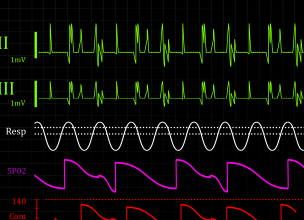Most people spend at least a third of their day in bed. That time can be spent in blissful sleep or tossing and turning, depending on your mattress type. Medical doctors have constantly highlighted that mattresses directly impact a person’s sleep. They continue to say that a good night’s sleep is the most significant contributor to a healthy life. Lack of good sleep affects one’s weight, mood, and hormone levels. Shockingly, the American Sleep Association estimates that 50-70 million people have sleep disorders.
We previously wrote that sleeping less than six hours a day can be really bad for your health. But are you doing enough to fix sleeping problems?
Your type of mattress plays a critical function in determining the quality of sleep you get. The market is flooded with different types of mattresses, calling on people to be extra cautious when purchasing mattresses.
When selecting a mattress, consider factors such as the type of mattress, its size, and comfort grade. Every mattress type has specific features designed for different kinds of people with different sleeping positions and body types.
Minimize Sleep Problems with the Right Problems
Avoiding sleep deprivation is essential for your health. One of the best ways to accomplish this is by choosing the right mattress. The six different types of mattresses that one can choose from for a better night’s sleep include the following:
1. Latex Mattresses
The latex mattress is made out of natural materials, making it ideal for people keen to be environmentally responsible. They are designed for comfort and are loved across the market for their durable nature. The latex mattresses are considered to be way cooler and more responsive when compared to memory foam.
The latex is best for people who frequently change their sleeping positions. The price of latex foam is higher than other foams, including memory foam, because it is organic and long-lasting.
2. Innerspring
The innerspring mattress is designed with coil-based support and layers around it. The innerspring mattress contains steel springs, either individual pockets or a single continuous coil. The thin layer of padding around it acts as a support to prevent the steel coils from poking out.
The innerspring mattress was once trendy and inexpensive. However, the older phase of innerspring mattresses has been replaced by the newer version, which contains extra layers on top of the springs for sufficient comfort. The newer innerspring mattresses are harder than foam mattresses and often feel bouncier. Nevertheless, the mattress is not ideal for partners because the continuous coil systems exhibit motion transfer between co-sleepers.
If you want to share a bed with a partner, purchase an individual spring system to avoid the motion transfer. It is important to note that most innerspring mattresses have different firmness levels. Select one that goes with your body type and sleeping position.
3. Poly-foam mattresses
Polyurethane foam mattresses, or Poly-foam, are the least expensive mattresses on the market. It is also the lowest quality mattress or mattress topper. Polyurethane foam is primarily used to make sofa cushions and other materials such as cheap egg trays. It is made from various compounds found in petrochemicals.
Most mattress manufacturers use polyurethane as a top layer to minimize the cost of manufacturing. Other than using spring coils, some manufacturers have started replacing them with polyurethane foam. It is important to note that this mattress is easy to compress because of its low density. With this low-density rating, the shipping cost is low.
Polyurethane is mainly used as a topper since it provides a sense of support and softness but cannot provide a similar support level as latex or memory foam. The poly-foam mattress does not bear any emission certifications other than the general certificate touted by all mattress manufacturers, Certipur-US. This certificate does not have the credibility of other certificates such as Oeko-tex.
4. Memory Foam
As the name suggests, memory foam molds around the body, responding to the pressure and heat and slowly bouncing back if the pressure is removed. In 1966 NASA sought to redesign aircraft cushions to improved safety. The researchers came up with memory foam and primarily used in their aircraft. Currently, memory foam is widely used for commercial purposes.
Memory foam is also called tempurpedic foam or viscoelastic polyurethane. The mattress is made from polyurethane but has additional compounds, which bear the slow-moving properties. As a result, it is more expensive than regular poly-foam.
Unlike latex foam, which responds immediately when one moves while in bed, memory foam is rigid and responds slowly, making it difficult to move during sleep. Memory foam has the characteristic of absorbing heat and getting warmer and softer with time. This makes it more and more difficult to change sleeping positions. Individuals who view this as a drawback often purchase a memory foam topper because it has fewer properties that could make it difficult to move.
Mattress manufacturers have both high and low-density memory foam; the high-density foam is known to be of better quality and more durable. The low-density memory foam is mainly used to make toppers, but it degrades quickly after a few months of constant use.
Doctors widely recommend memory foam mattresses for back pain relief. The National Sleep Foundation indicates that memory foam provides relief to people’s aching joints and improves sleep quality.
5. Hybrid Mattresses
The hybrid mattress combines both the traditional innerspring and latex bed properties. The combination results in a balance of pressure relief, edge support, responsiveness, and temperature regulation. Over the past few years, hybrid mattresses have become common.
This type of mattress is growing in popularity because of its suitability for different sleeping positions and body types. The mattress is designed to allow airflow as opposed to other types of mattresses. With free-flowing air within the mattress, the temperature is regulated, hence making the bed comfortable throughout the sleeping time.
6. Waterbed Mattresses
A waterbed refers to a vinyl mattress filled with water, approximately 235 gallons for a king-size bed. The user must replace a waterbed conditioner annually to keep the vinyl supple and avoid brittleness. The waterbed allows one to heat or cool the water to the desired temperature.
The water held within the bladders makes the mattress feel bouncier and softer than typical mattresses. Research conducted by various institutions indicates that waterbeds are showing better results for lower back pain relief than other mattresses.
Consider the following factors when selecting the best mattress type: firmness, sleeping position, body type, and pricing. The price of all mattresses is determined by the following: materials, brand, type of construction, where it is designed and constructed, and where it is sold.
Get the Right Mattress to Avoid Sleep-Related Health Issues
Sleep disorders are major causes of serious health issues. Fortunately, changing your mattress can do a lot to make them better. Be aware of the six best types of mattresses to address sleep problems.









